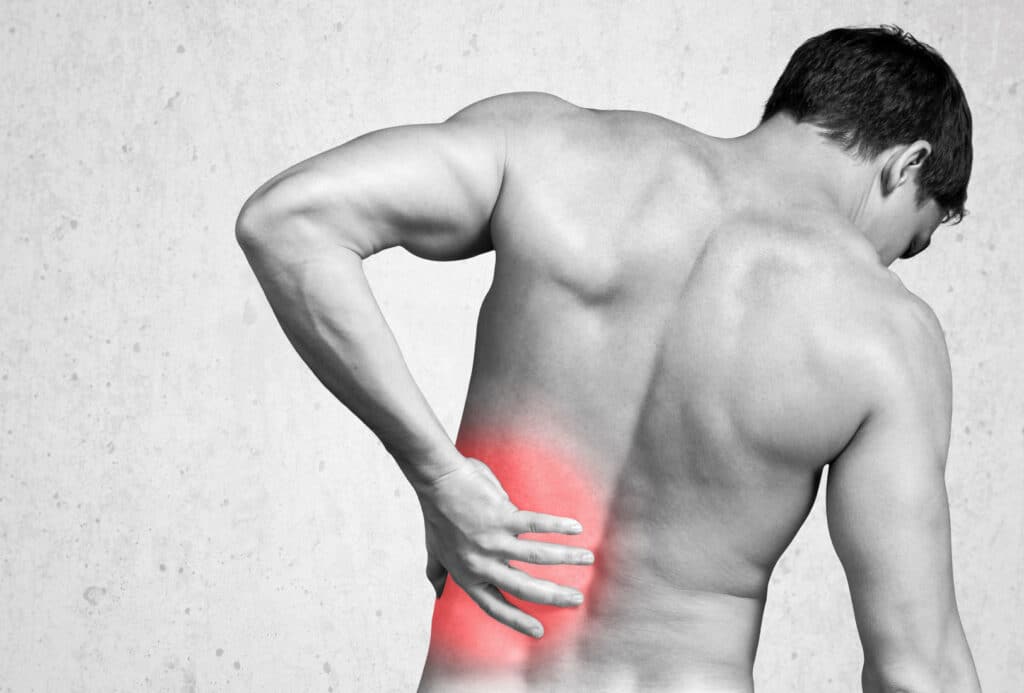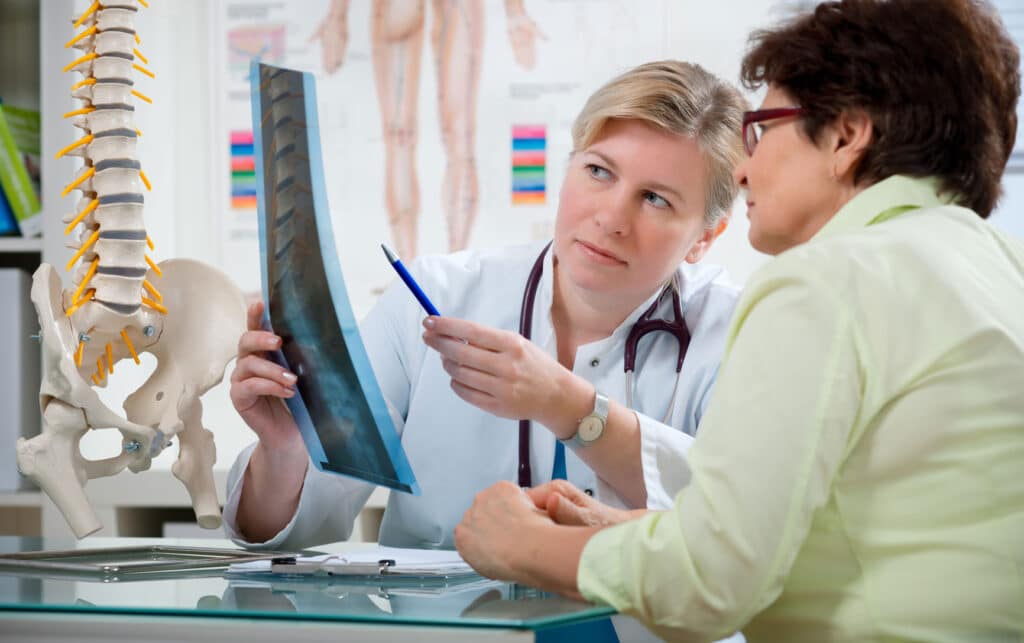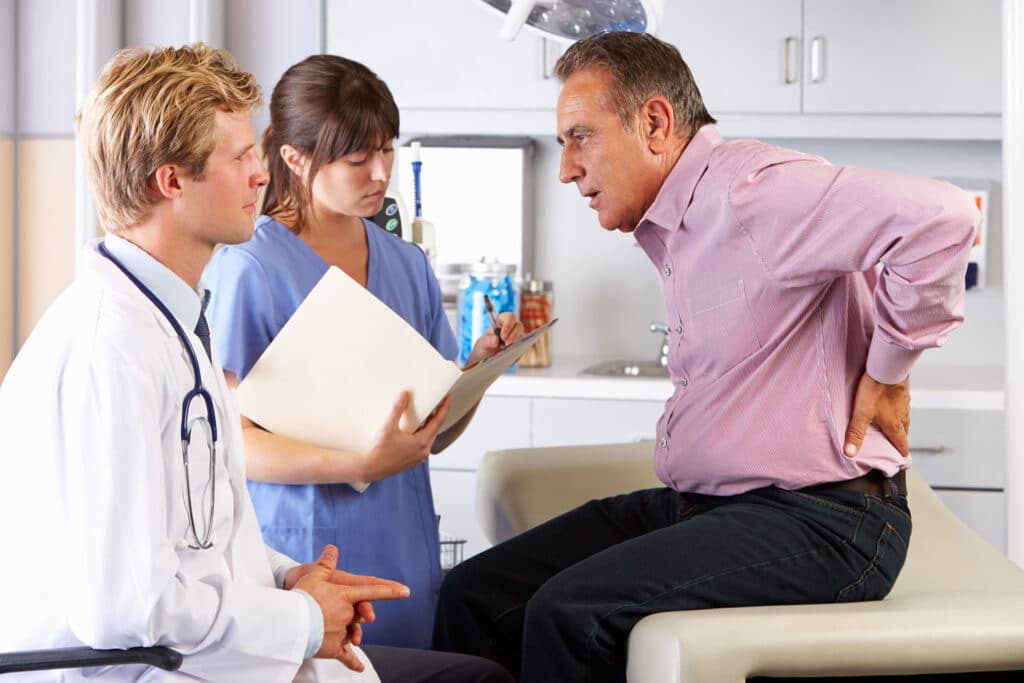Anyone who’s near or has passed their 30s knows that back pain has become a regular part of their lives. Almost 80% of adults experience some form of pain or discomfort in their backs, so you shouldn’t panic at the slightest hint of low-back pain.
However, certain painful symptoms may indicate underlying serious medical conditions that necessitate an immediate urgent evaluation.
By identifying these five back emergencies, individuals can promptly seek appropriate medical care and potentially prevent further complications or long-term damage.
The following information can be crucial for anyone who prioritizes their well-being and that of others. Read more and help prevent a medical emergency.
Who Are Most at Risk of Back Pain?
Individuals with certain risk factors, such as a sedentary lifestyle, obesity, advanced age, and a history of cancer in their families, are more likely to experience back pain emergencies. These risk factors contribute to the development of various conditions that can cause severe or worrying pain in the back.
The young and the elderly.
You would think issues with the spine and back are mostly present only in older individuals, but the very young are also at risk.
When diagnosing back pain, it is crucial to consider the age of the individual. Those who are under 18 or over 50 years old are more likely to have serious conditions as the underlying cause. Both tumors and infections are more prevalent in these age groups. Younger individuals face a higher risk of spondylolysis and spondylolisthesis. If these conditions are severe and left untreated from an early age, they can cause pain and disability by affecting the neural elements of the spine.
Elderly individuals are particularly vulnerable to abdominal aortic aneurysms, which can cause severe abdominal pain along with back pain, while older individuals may experience fractures, including pathologic fractures, even with minor trauma.
Immunocompromised
While it might not seem related to painful back conditions, a weakened immune system can result in several spinal conditions.
Individuals with reduced immunity but also with a health history of intravenous drug abuse, bacterial infections, pneumonia, or urinary tract infections can be more susceptible to spinal infections, which then lead to spine inflammation and spine pain.
Another risk factor is people with a history of cancer or chronic steroid use. They’re medical conditions that weaken the immune system and can lead even to spinal fractures in some cases.
Visiting your primary care or physiotherapist should be top of mind if you belong to any of these at-risk groups or simply have a medical history of trauma in the spine, and do so at the first sign of any worrying back pain presentation.
5 Back Pains That Should Worry You The Most

No matter what age, sex, or health condition you’re in, any of the following types of back pain should motivate you to get an appointment with a health care provider or at least a physical therapist.
If you can associate your back pain with a specific activity, like lifting or twisting incorrectly, and the pain goes away within three days after resting and applying ice, there is usually no need to worry. However, if it gradually increases, appears suddenly, or persists, it may indicate a more serious condition.
Don’t wait for a medical emergency that leaves you unable to even walk, and learn to detect the following signs and symptoms.
1. Radiculopathy
Pain that spreads, known as radiculopathy, can arise as a result of various underlying factors affecting the back. Also known as radicular pain, it is characterized by pain that radiates and travels along the nerve pathway, often beginning as non-specific low back pain and then traveling down to the legs. This condition can be caused by several types of spinal injury, such as herniated discs, spinal stenosis, or degenerative disc disease.
To diagnose radicular pain, imaging techniques such as MRI or CT scans are commonly used to visualize the spinal structures and identify the source of the discomfort. Treatment options for radiculopathy may include physical therapy, medication, or in severe cases, surgical intervention.
An extremely serious condition known as aortic aneurysm, common in elderly patients and those with cardiovascular problems or with a history of heart attack, can result in radicular pain that is severe and requires emergency care. It combines non-specific low back pain with abdominal pain that can cripple anyone suffering from this condition. Spinal epidural hematomas also start as radicular pain that worsens like this. Any case of pain that spreads to the abdomen from the back should be addressed immediately.
It is crucial for individuals experiencing leg pain or radicular symptoms to seek medical attention promptly to prevent further complications and promote a better quality of life.
2. Pain and Numbness Below the Waist from Cauda Equina Syndrome
Numbness and pain below the waist can be indicative of cauda equina syndrome, a condition that requires urgent medical attention to prevent further complications. This syndrome occurs when the nerves in the lower back become compressed, leading to a range of symptoms.
Individuals with cauda equina syndrome may experience severe pain that radiates down the legs, along with numbness and tingling in the lower extremities, with even sexual dysfunction being a common sign. The sensation of pins and needles spreading from the lower back down to the feet. A feeling of weakness and heaviness in the legs makes it difficult to do simple straight leg raises, walk, or stand, and cauda equine can also cause complete loss of bladder control or bowel control, resulting in overflow incontinence.
Other conditions like ankylosing spondylitis and sacroiliitis can also cause non-specific low back pain and numbness but include buttock pain.
Recognizing these symptoms is crucial in seeking immediate medical attention to prevent further damage to the nerves and potential long-term complications.
3. Inflammatory Back Pain
Inflammatory back pain is characterized by chronic discomfort and stiffness in the spine, particularly in the morning or after prolonged periods of rest. It is often associated with conditions such as ankylosing spondylitis or inflammatory arthritis.
The signs may include gradual onset, persistent or chronic pain lasting for more than three months, morning stiffness, buttock pain, and pain that wakes you during the night but can improve a bit with activity and exercise in the morning.
Individuals with this condition may also experience pain and stiffness in other joints, such as the hips or shoulders.
It is important to note that inflammatory back pain is different from mechanical back pain, which is typically caused by muscle strain or injury. An urgent evaluation by your primary care physician and appropriate treatment are essential to manage the symptoms and prevent long-term complications.
4. Fevers and Chills from Spinal Infections
Fever and chills are common symptoms associated with spinal infections, which can be caused by bacterial, fungal, or viral pathogens. When a spinal infection occurs, it can lead to a range of neurological issues along with back pain.
Here are three possible causes of spinal infections:
- Bacterial pathogens: Bacteria, such as Staphylococcus aureus, Escherichia coli, and Streptococcus species, can enter the spine through open wounds or surgical procedures, leading to infection.
- Fungal pathogens: Fungal infections, such as those caused by Candida or Aspergillus species, can occur in individuals with weakened immune systems or those who have undergone invasive spinal procedures.
- Viral pathogens: Although less common, viral infections such as herpes zoster or cytomegalovirus can also cause spinal infections, resulting in fever, chills, and other associated symptoms.
Additionally, a spinal epidural abscess, which is a rare but serious infection of the spinal canal, can also cause back pain emergencies.
Recognizing these potential causes can aid health care providers in diagnosing and treating spinal infections promptly, ensuring the best possible outcomes for patients.
5. Severe Pain and Loss of Height
Severe pain and a noticeable loss of height are concerning symptoms that may indicate underlying compression vertebral fractures or spinal cord compression. These conditions can be caused by various factors, such as osteoporosis, trauma, or tumors.
Compression fractures occur when the bones in the spine, known as vertebrae, collapse or break. This type of spinal injury can lead to severe back pain and decreased height due to the compression of the spinal discs.
Spinal cord compression, on the other hand, is the compression or squeezing of the spinal cord itself. This can result in severe pain and potential damage to the spinal cord, leading to neurological symptoms.
It is important to note that both conditions require urgent medical attention to prevent further complications. Seeking timely medical care is crucial in diagnosing and treating these conditions to alleviate severe pain and prevent long-term damage.
Why Identifying Serious Symptoms Is Important

Identifying the presence of alarming symptoms is crucial in order to promptly address potential underlying serious conditions. When it comes to back pain, being aware of these symptoms can prevent any delay in receiving appropriate medical care and potentially avoid further complications. Here are three reasons why identifying serious symptoms is important:
- Early detection of a spinal condition: Recognizing symptoms such as persistent pain, numbness or weakness in the legs (in one or both legs), or difficulty controlling bowel or bladder function can help identify serious spinal conditions, such as spinal stenosis or herniated discs, which may require surgery or specialized treatment.
- Timely management of diseases: Identifying symptoms like unexplained weight loss, night sweats, or severe fatigue can raise concerns about underlying diseases such as cancer or autoimmune disorders that may require immediate intervention by a primary care provider.
- Preventing long-term complications: Prompt identification of symptoms like loss of height, chronic back pain, or difficulty walking can help prevent long-term complications associated with conditions like osteoporosis or spinal deformities, which may require surgical intervention.
Being vigilant about serious red flag symptoms can play a crucial role in ensuring timely treatment and appropriate care for back pain patients.
How to Relieve Some Back Pain at Home Temporarily

Special positions can help alleviate the pressure on the spine and reduce back pain. For example, lying on the back with a pillow under the knees or on the side with a pillow between the legs can provide relief.
Medications, such as over-the-counter pain relievers or muscle relaxants, may also provide temporary relief. However, it is important to consult with a healthcare professional before taking any medication to ensure it is safe and appropriate for your specific condition.
In addition to special positions and medications, heat and cold treatments can be beneficial. Applying a hot pack or a cold pack to the affected area can help reduce inflammation and provide temporary pain relief.
Overall, these temporary home remedies can be helpful in managing back pain, but it is important to seek professional advice for a proper diagnosis and long-term treatment plan.
Special positions for relieving back pain
A variety of positions have been found to be effective in relieving back pain and can be explored as potential strategies for symptom management. These special positions can provide relief and comfort to individuals experiencing back pain.
- The fetal position: lower back pain may be alleviated by curling up on one’s side with the knees drawn towards the chest. This helps reduce pressure on the spine and promotes relaxation.
- The supported bridge pose: lying on the back with the knees bent and feet flat on the floor, raising the hips, and placing a pillow or bolster underneath for support. This position can help relieve tension in the lower back and promote gentle stretching of the spine.
An important warning: do not sit up in bed and avoid bedrest if possible. Bedrest might feel good at first, but it can actually delay proper healing and make things worse. Also, avoid couches that are too soft or make you “sink” into them too much.
Exploring these special positions can be a helpful part of self-care for individuals experiencing back pain. However, it is important to consult with a healthcare professional for a proper diagnosis and to discuss appropriate therapeutic approaches for long-term management of back pain.
Medications
Medications commonly prescribed for back pain include non-steroidal anti-inflammatory drugs (NSAIDs), such as ibuprofen, opioid analgesics, and muscle relaxants, such as cyclobenzaprine, which can help alleviate pain and reduce muscle spasms.
NSAIDs are anti – inflammatories, and they hence work by reducing inflammation, which is often associated with back pain. They can also help relieve pain by blocking certain chemicals in the body that transmit pain signals. Many NSAIDs are also available as over-the-counter pain medications, making them the preferred temporary solution for many while they seek medical treatment.
Muscle relaxants, specifically skeletal muscle relaxants, on the other hand, work by reducing muscle spasms, which can contribute to back pain. Skeletal muscle relaxants are powerful medications that require a prescription.
Opioid analgesics were once regularly included in prescriptions for non-specific low back pain but are now avoided in most cases, as one systematic review and meta-analysis after another find that they’re not as useful as the rest of the medications mentioned here. They also put the patient in danger of addiction and abuse.
While these medications can be effective in back pain management, it is important to note that they should be used in conjunction with other treatments, such as physical therapy. Physical therapy can help improve strength and flexibility and reduce and prevent future episodes of back pain.
Therefore, a combination of medication and physical therapy may provide the best results.
Heat and Cold Treatments
Heat and cold treatments are commonly used to alleviate discomfort associated with back and spine conditions, providing temporary relief by altering blood flow, reducing inflammation, and numbing the affected area. These treatments are often recommended by healthcare professionals to help manage pain and promote healing.
- Heat therapy: Applying heat to the affected area can help relax muscles, increase blood flow, and reduce stiffness. This can be done through the use of hot packs, warm towels, or heating pads. The warmth penetrates deep into the tissues, providing a soothing sensation and promoting relaxation.
- Cold therapy: Cold treatments, such as ice packs or cold compresses, are effective in reducing inflammation and numbing the area. Cold causes vasoconstriction, which helps to decrease blood flow to the injured area, thereby reducing pain and swelling.
- Alternating heat and cold: Some individuals find relief by alternating between heat and cold treatments. This can help to increase blood circulation, reduce inflammation, and provide a numbing effect, offering a combination of both therapies.
When using heat or cold treatments, it is important to follow proper guidelines and consult a healthcare professional for advice on the appropriate duration and frequency of application.
Don’t Let Back Pain Go Unchecked

Any of the back pain emergencies and types of pain mentioned in the article should be enough to seek medical attention. Even if we’re not talking about a serious condition like a spinal infection, tumor, fractures, cauda equina syndrome, and spinal cord compression, don’t risk making the pain worse.
Recognizing the symptoms associated with these emergencies and seeking prompt medical care is crucial in order to receive appropriate treatment and prevent further complications.
By being proactive and knowledgeable about these back and spine emergencies, back pain patients or their loved ones can take the necessary steps to protect their health and well-being, all while avoiding the need for emergency department visits.
If the worst comes to pass and you need surgical intervention for your back pain emergency, an experienced spine surgeon like Dr. Hamid is the only way forward. Dr Hamid Mir is a board-certified orthopedic spine surgeon in Newport Beach, CA with fellowship training in combined neuro and orthopedic spine surgery techniques who’s based in Orange County, CA. He has 18 years of experience in minimally invasive spine surgeries using advanced microscopic techniques.
With his expertise, compassionate approach, and medical team, you can trust Dr. Hamid R. Mir MD to guide you through the diagnosis, treatment, and recovery process, ensuring the best possible outcomes for your spinal health. Don’t wait; schedule your appointment today and take the first step towards a healthier spine.



